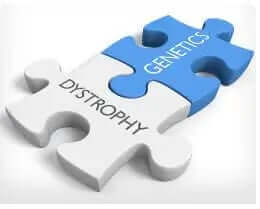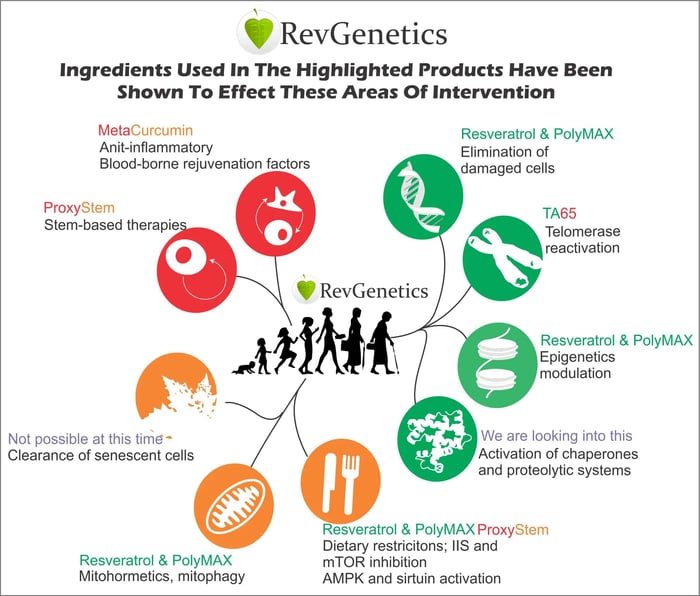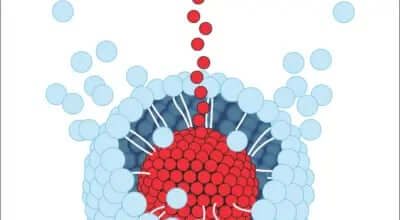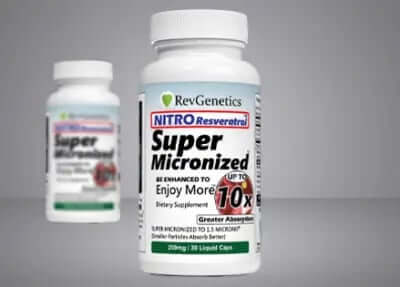Muscular Dystrophy Research Breakthrough: How Telomerase Discovery Opens New Treatment Possibilities
Muscular dystrophy represents a group of genetic disorders that progressively weaken muscles, affecting millions of families worldwide. Among these conditions, Duchenne muscular dystrophy (DMD) stands as one of the most severe forms, typically diagnosed in early childhood. Recent groundbreaking research from Stanford University has uncovered a crucial connection between telomerase activity and muscular dystrophy progression, offering renewed hope for patients and their families seeking effective treatments.
Understanding Duchenne Muscular Dystrophy: A Comprehensive Overview
Duchenne muscular dystrophy affects approximately 1 in 3,500 male births globally, making it the most common fatal genetic disorder diagnosed in childhood. This inherited condition results from mutations in the dystrophin gene, leading to progressive muscle weakness that typically begins in the legs and pelvis before spreading to other muscle groups. Children with muscular dystrophy often show initial symptoms between ages 2 and 5, including difficulty walking, frequent falls, and trouble climbing stairs.
The impact of muscular dystrophy extends far beyond physical limitations. Families navigating this diagnosis face emotional, financial, and social challenges. However, recent scientific advances, particularly in understanding the role of telomerase in disease progression, have sparked optimism in the medical community about developing more effective therapeutic approaches.
The Telomerase Connection: Revolutionary Insights into Muscular Dystrophy
Telomerase, an enzyme responsible for maintaining chromosome ends called telomeres, plays a critical role in cellular aging and regeneration. Stanford University researchers made a pivotal discovery when they found that telomerase activity significantly influences how muscular dystrophy progresses in laboratory models. This finding has transformed our understanding of the disease mechanism and opened new avenues for potential treatments.
Creating Better Research Models for Muscular Dystrophy
One major challenge in muscular dystrophy research has been the lack of accurate animal models that faithfully replicate human disease progression. Traditional mouse models, known as mdx mutant mice, carry the same genetic mutation as humans with DMD but fail to show the same severity of symptoms. This discrepancy has hindered the development of effective treatments for decades.
The Stanford research team addressed this limitation by creating an innovative mouse model that removes telomerase activity. This modification causes the mice to develop symptoms much more similar to human muscular dystrophy patients, including:
- Progressive muscle degeneration matching human disease patterns
- Shortened lifespan reflecting the severity seen in patients
- Cardiac complications mirroring those experienced by humans with DMD
- Respiratory muscle weakness comparable to clinical observations
Impact on Muscular Dystrophy Treatment Development
This enhanced research model represents a significant leap forward for muscular dystrophy treatment development. With a more accurate representation of human disease, researchers can now:
- Test potential therapies more effectively, reducing the risk of clinical trial failures
- Study disease progression in detail, identifying critical intervention points
- Develop targeted treatments addressing specific aspects of muscle degeneration
- Accelerate drug discovery timelines through more reliable preclinical testing
- Explore combination therapies that may prove more effective than single treatments
Promising Treatment Approaches Emerging from Telomerase Research
The telomerase discovery has inspired several innovative treatment strategies for muscular dystrophy. Researchers are now exploring therapies that modulate telomerase activity, potentially slowing disease progression or even reversing some muscle damage. These approaches include:
- Gene therapy techniques targeting telomerase regulation
- Small molecule drugs that influence telomere maintenance
- Stem cell therapies enhanced by telomerase manipulation
- Combination treatments addressing multiple disease pathways
Living with Muscular Dystrophy: Support and Resources
While research continues advancing, families affected by muscular dystrophy benefit from comprehensive support systems. Modern care approaches combine medical management with physical therapy, occupational therapy, and psychological support. Many patients with muscular dystrophy lead fulfilling lives, pursuing education, careers, and meaningful relationships with appropriate accommodations and support.
Early Intervention Strategies
Early diagnosis and intervention significantly improve outcomes for children with muscular dystrophy. Current best practices include:
- Regular physical therapy to maintain muscle strength and flexibility
- Corticosteroid treatments shown to slow muscle degeneration
- Cardiac monitoring to detect and manage heart complications early
- Respiratory support as needed to maintain quality of life
- Nutritional guidance to support overall health and muscle function
Future Outlook: Hope Through Scientific Innovation
The connection between telomerase and muscular dystrophy represents just one example of how scientific understanding continues evolving. Current research pipelines include numerous promising approaches, from gene editing technologies like CRISPR to innovative drug compounds targeting specific disease mechanisms. Clinical trials testing these new treatments offer hope to families who have long awaited effective therapies.
The improved mouse model developed by Stanford researchers accelerates this progress by providing a more reliable platform for testing potential treatments. This advancement means that promising therapies can move from laboratory to clinical trials more quickly and with greater confidence in their potential effectiveness.
Participating in Research and Clinical Trials
Families interested in contributing to muscular dystrophy research have multiple opportunities to participate in studies and clinical trials. These contributions not only potentially benefit individual patients but also advance scientific understanding for the entire muscular dystrophy community. Research participation options include:
- Natural history studies tracking disease progression over time
- Drug trials testing new therapeutic compounds
- Genetic studies exploring disease mechanisms and variations
- Quality of life research improving supportive care approaches
Building a Supportive Community
The muscular dystrophy community exemplifies resilience and mutual support. Organizations worldwide provide resources, advocacy, and connections for affected families. These networks offer practical assistance with equipment needs, educational support, and emotional encouragement throughout the journey with muscular dystrophy.
Success stories from within the community inspire hope and demonstrate that a muscular dystrophy diagnosis, while challenging, does not define or limit a person's potential. Many individuals with muscular dystrophy achieve remarkable accomplishments in academics, arts, technology, and advocacy, showing that with proper support and determination, meaningful lives are entirely possible.
Conclusion: A Brighter Future for Muscular Dystrophy
The discovery of telomerase's role in muscular dystrophy progression marks a pivotal moment in research history. This breakthrough, combined with the development of more accurate disease models, accelerates our journey toward effective treatments. While challenges remain, the scientific community's dedication and the courage of families affected by muscular dystrophy continue driving progress forward.
As research advances and new treatments emerge from laboratories worldwide, hope grows stronger for the muscular dystrophy community. The combination of improved understanding, better research tools, and innovative therapeutic approaches promises a future where muscular dystrophy becomes a manageable condition rather than a life-limiting diagnosis. Every scientific discovery, including the telomerase connection, brings us closer to that goal.
Frequently Asked Questions About Muscular Dystrophy and Telomerase Research
What is the connection between telomerase and muscular dystrophy?
Telomerase, an enzyme that maintains chromosome ends, plays a crucial role in how muscular dystrophy progresses. Stanford University researchers discovered that removing telomerase activity in mouse models creates symptoms much more similar to human Duchenne muscular dystrophy. This finding helps scientists better understand the disease mechanism and develop more effective treatments by providing a more accurate research model.
How does the new mouse model improve muscular dystrophy research?
Traditional mouse models with muscular dystrophy mutations did not accurately represent human disease severity, limiting research effectiveness. The new model without telomerase activity shows progressive muscle degeneration, shortened lifespan, and cardiac complications similar to human patients. This improvement allows researchers to test potential treatments more reliably and accelerate the development of therapies that are more likely to succeed in human clinical trials.
What are the most promising treatments being developed for muscular dystrophy?
Current promising treatments for muscular dystrophy include gene therapy targeting telomerase regulation, small molecule drugs influencing telomere maintenance, enhanced stem cell therapies, and combination treatments addressing multiple disease pathways. Additionally, existing approaches like corticosteroid treatments, physical therapy, and cardiac monitoring continue to improve patient outcomes. The telomerase discovery opens new possibilities for slowing or potentially reversing muscle damage.
Can children with muscular dystrophy lead normal lives?
Many children with muscular dystrophy lead fulfilling, meaningful lives with appropriate support and accommodations. Early intervention including physical therapy, medical management, and educational support helps maximize independence and quality of life. While muscular dystrophy presents challenges, advances in treatment and supportive care enable many patients to pursue education, careers, relationships, and personal goals. The growing understanding of the disease through research like the telomerase studies offers hope for even better outcomes in the future.
How can families participate in muscular dystrophy research?
Families can participate in muscular dystrophy research through various studies including natural history studies tracking disease progression, clinical drug trials testing new treatments, genetic studies exploring disease mechanisms, and quality of life research. Participation not only potentially benefits individual patients but advances scientific understanding for the entire community. Contact muscular dystrophy organizations or research centers to learn about available studies and eligibility requirements.
What role does early diagnosis play in muscular dystrophy management?
Early diagnosis of muscular dystrophy significantly improves long-term outcomes by enabling timely intervention. When detected early, treatments like corticosteroid therapy can slow muscle degeneration more effectively. Early physical therapy helps maintain muscle strength and flexibility longer. Additionally, early cardiac and respiratory monitoring prevents complications. The telomerase research breakthrough may lead to even more effective early interventions as new treatments emerge from improved disease models.
How long does it take for new muscular dystrophy treatments to reach patients?
Developing new muscular dystrophy treatments typically takes 10-15 years from initial discovery to patient availability. However, the improved mouse model using telomerase manipulation may accelerate this timeline by providing more accurate preclinical testing. Treatments showing promise in these enhanced models are more likely to succeed in human trials, potentially reducing development time. Several therapies inspired by the telomerase discovery are already entering early clinical trials, offering hope for faster access to effective treatments.
What support resources are available for families affected by muscular dystrophy?
Numerous resources support families dealing with muscular dystrophy, including national organizations providing information and advocacy, local support groups offering community connections, equipment loan programs for mobility aids, educational accommodations assistance, respite care services, and financial aid programs. Many organizations also fund research like the telomerase studies, connecting families with cutting-edge developments. These comprehensive support systems help families navigate challenges while maintaining hope through scientific progress.
Why is Duchenne muscular dystrophy more common in males?
Duchenne muscular dystrophy primarily affects males because the dystrophin gene is located on the X chromosome. Males have only one X chromosome, so a single mutated gene causes the disease. Females have two X chromosomes, so they typically remain carriers without symptoms. This genetic pattern means muscular dystrophy affects approximately 1 in 3,500 male births. Understanding this genetic basis, combined with discoveries like the telomerase connection, helps researchers develop targeted therapies.
What lifestyle modifications help manage muscular dystrophy symptoms?
Effective lifestyle modifications for muscular dystrophy include regular low-impact exercise to maintain muscle function, balanced nutrition supporting muscle health, adequate hydration, proper sleep positioning to prevent contractures, stress management techniques, and maintaining social connections. Swimming and water therapy provide excellent exercise options. As research like the telomerase studies leads to new treatments, these lifestyle approaches complement medical interventions, maximizing quality of life and potentially enhancing treatment effectiveness.







